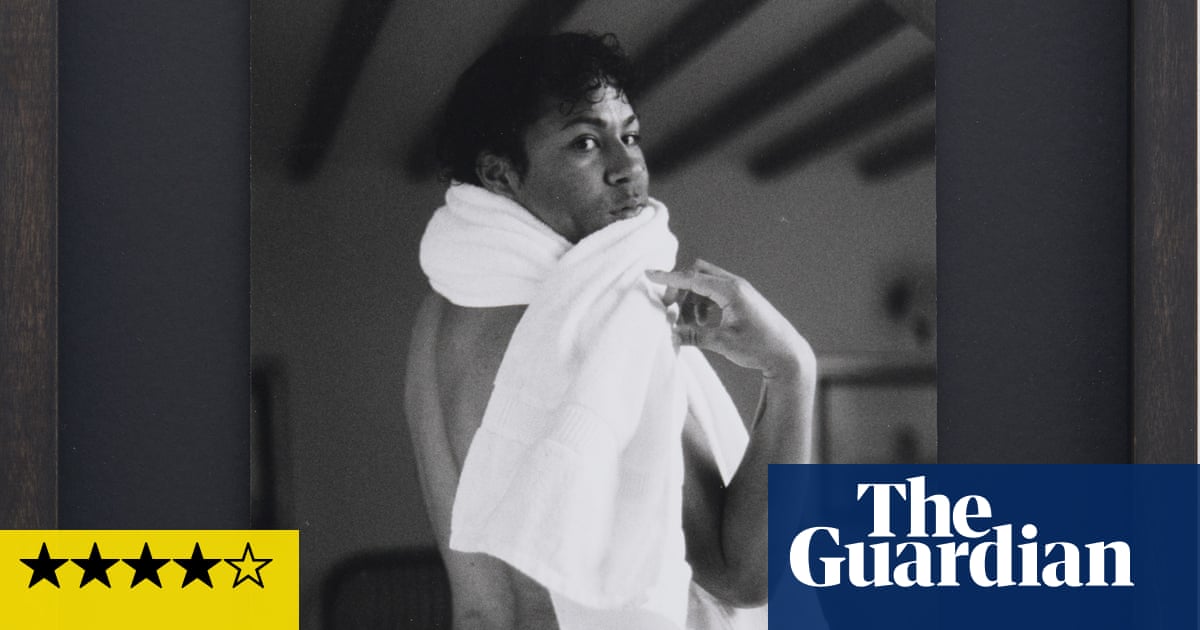Rene Matić’s nomination for the 2025 Turner prize was announced the week this exhibition opened. Only one photographer has ever been awarded the prize – Wolfgang Tillmans. Matić is not a technically masterly photographer, but a quiet observer of things, like Tillmans. Matić riffs on a documentary, diaristic style of photography, with snapshots of everyday moments and poetic juxtapositions, which are then used to create installations, grouping images to surreptitiously bring out buried tensions and paradoxes. Where those tensions have often been urgent and angry in Matić’s previous exhibitions, this new show highlights another facet of their work. It is perhaps Matić’s most personal exploration yet.
Although these installations are evocative slices of life, it’s the whiteness of the gallery’s walls and ceiling that you notice first. Their sharp, stark white engulfs the contrasting small-scale obsidian pictures, scattered across the wall like dark gems on a pristine beach. The whiteness is overbearing and cold, but it also emphasises the lustrous quality of the black-and-white pictures. This plays symbolically into Matić’s concern with the rubric of whiteness in British society, and how blackness lives within, alongside or outside it. Their images describe what many of us mixed-race people in the UK experience as being in-between, something Matić has termed “rude(ness)”. The simple choice, to make the pictures small and place them sparsely on the white wall, makes you experience this “rude(ness)” concept visually.
Blackness and whiteness are important to Matić’s identity. They are also important in making a photograph. These images are the result of Matić’s first forays into the darkroom, developing silver gelatin prints. The care this involved was fitting for the pictures, which are all personal – showing the artist’s inner circle. They portray a journey inwards and towards those closest, to the people and things that make a person who they are. As the title suggests, there are intimate images of family members, friends, partners, self-portraits. It is all explored with the feeling of being close enough to reach out to one another: in one, Touching Campbell’s Face, Matić does just that. The portraits, particularly the one of a heavily pregnant friend, are about how bodies of loved ones can be entire worlds.
There are also shadows, hinting at the absent, unknown parts of ourselves, made visible by the light. There are cultural objects that have shaped Matić’s understanding of their own identity: a vintage first-edition copy of James Baldwin’s Another Country reclining in a luxurious heap of rumpled bedsheets and pillows; a Nina Simone vinyl record; a lineup of Matić’s collection of figurines by St Martin de Porres, the 16th-century Peruvian lay brother canonised as the patron saint of mixed-race people and all those seeking racial harmony.
By formal standards, the photographs are mostly good. What makes them interesting is the way Matić arranges them, sometimes placed coming towards each other, sometimes heightening the tensions of difference, moving against each other. Some of the sequences are looser. Four images side by side portray a friend and frequent muse, the playwright Travis Alabanza, wrapped in a white towel; and another friend Grace, backstage before a performance at Ugly Duck, a LGBTQIA+ arts organisation in London. The Simone record. We see another friend, Mia, at the kitchen table, a nod to Carrie Mae Weems. Mia is surrounded by empty bottles – the air seems thick with the intimacy of a late-night moment.
Each feels like a private performance for Matić’s camera. In another image, another kind of implied performance, Matić’s blond wig and black platform shoes are cast off, abandoned on the floor. The sensation is of Matić shrugging off the mask, feeling safe.
Matić’s body throughout remains only half-revealed, though: smoky, soft images of their legs, their shadows. In one image, we see the photographer’s reflection in a mirror, holding the camera, an apparition above a clutch of cherished family pictures at their granny’s house. A reconciliation of sorts comes in paired mother and father portraits, both shown holding cigarettes. At this point, you realise what else this show is telling you: it all begins with love.
